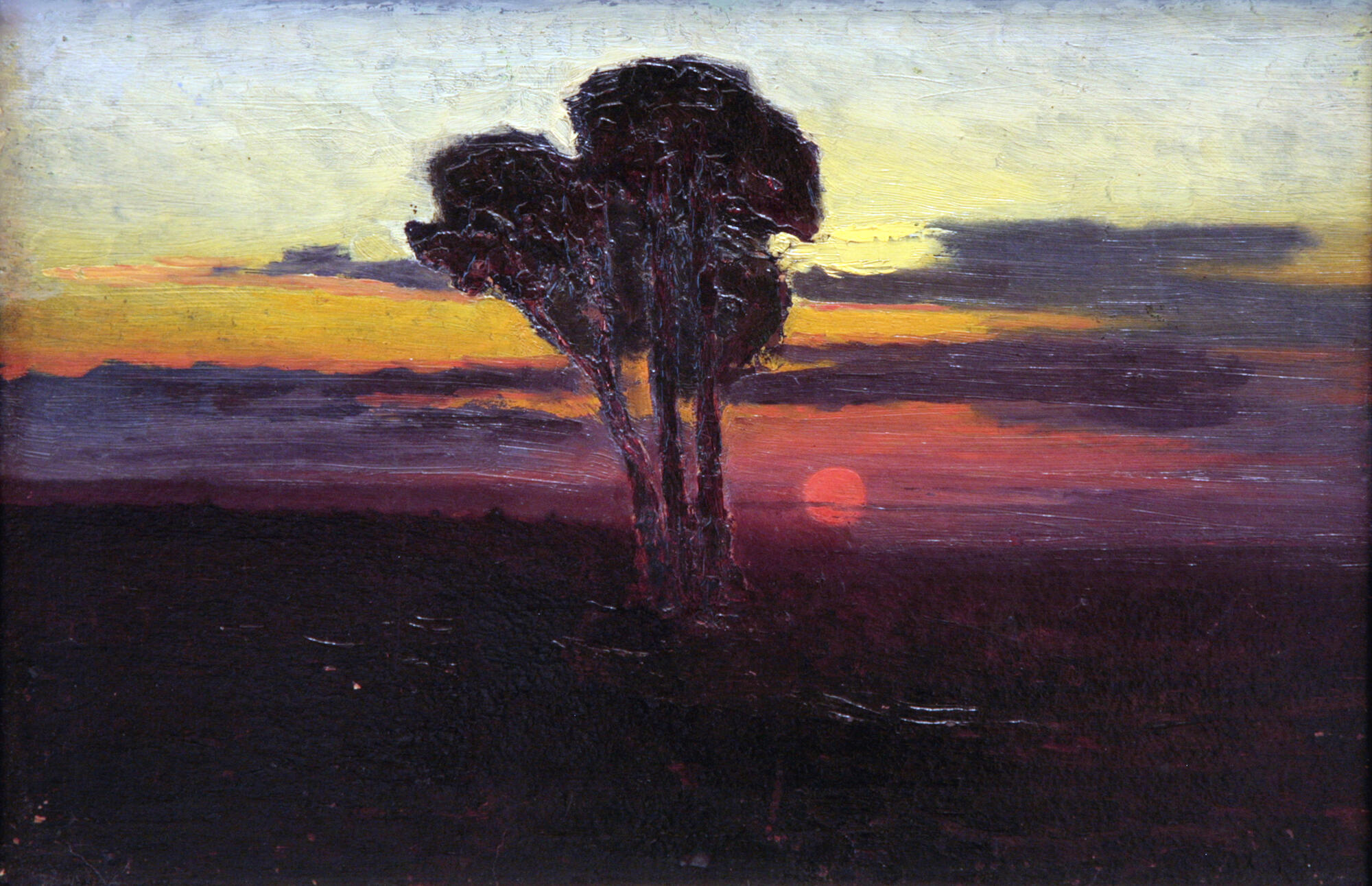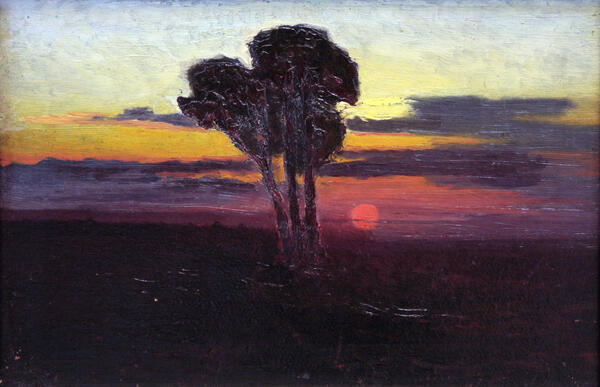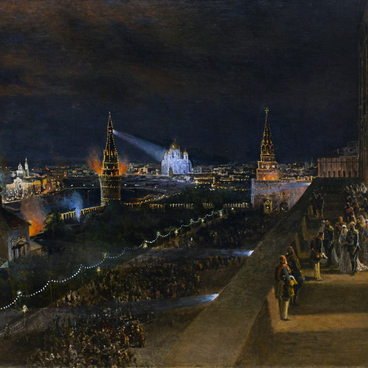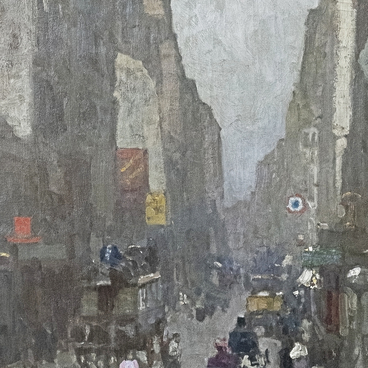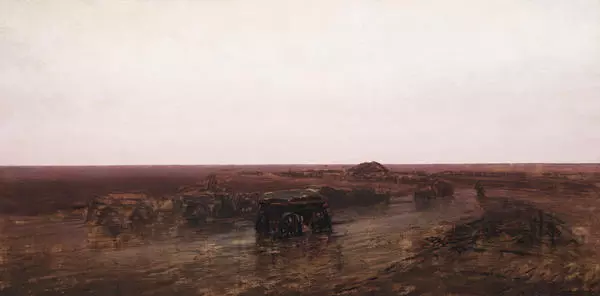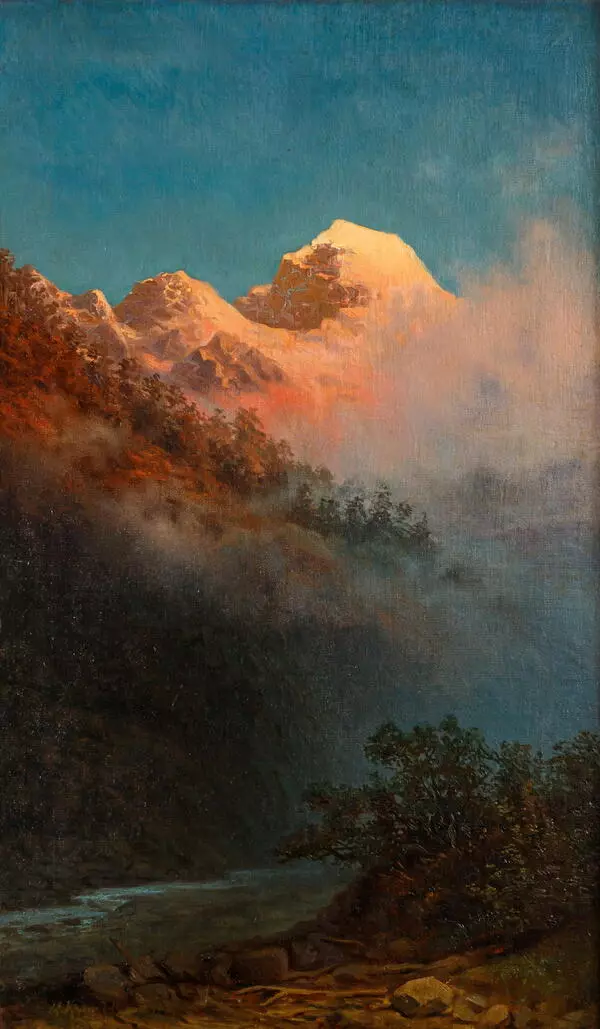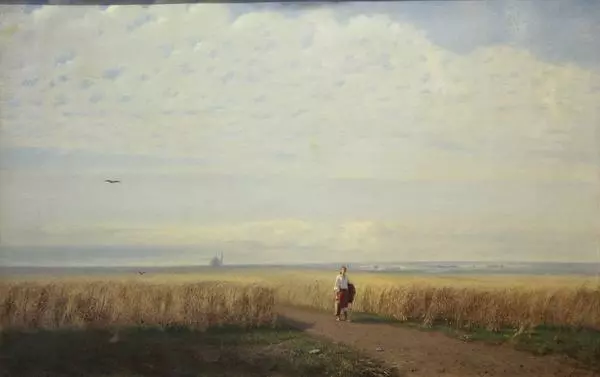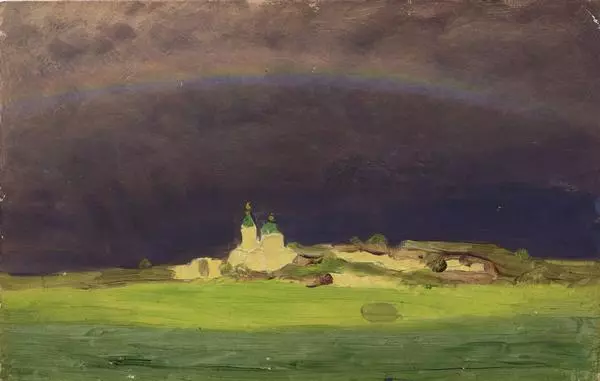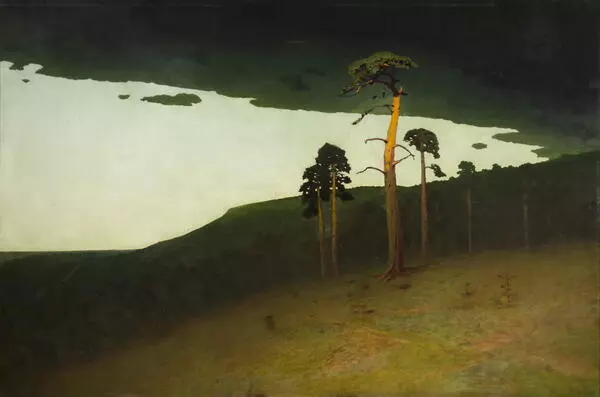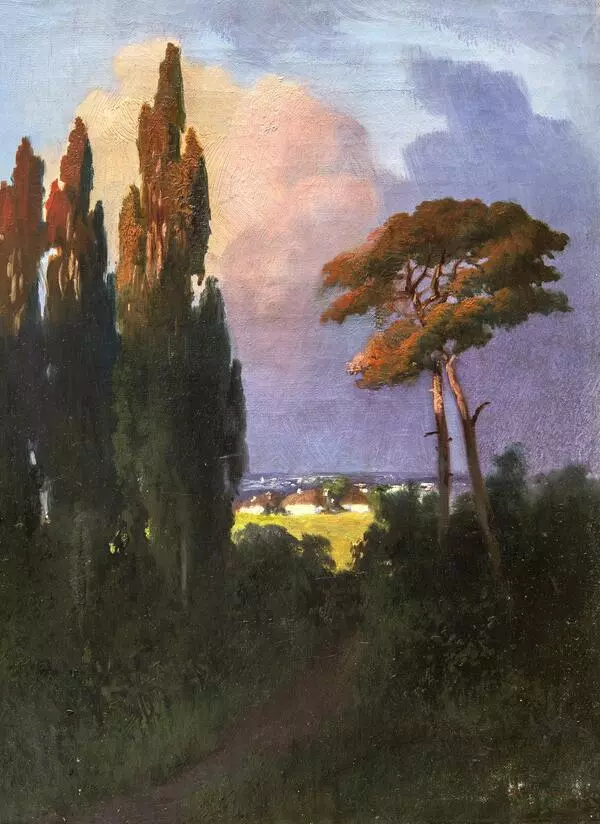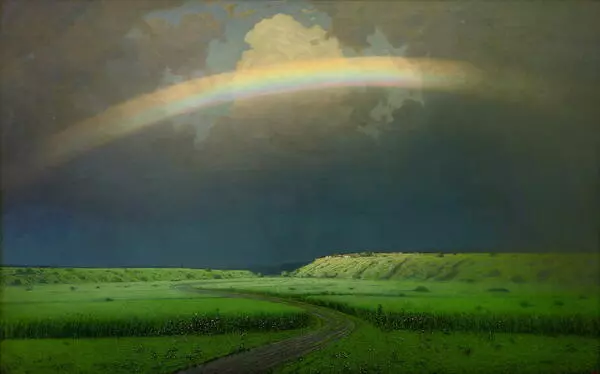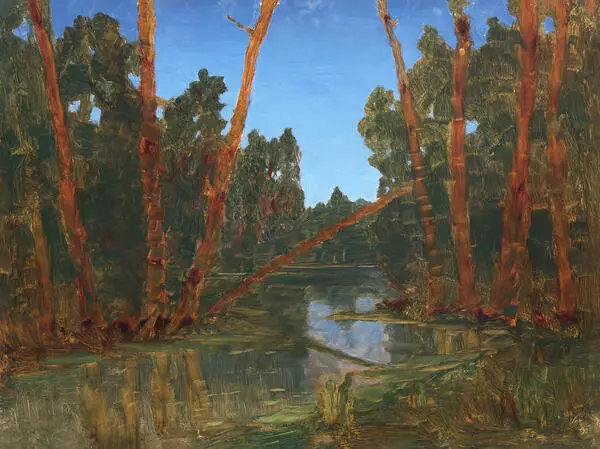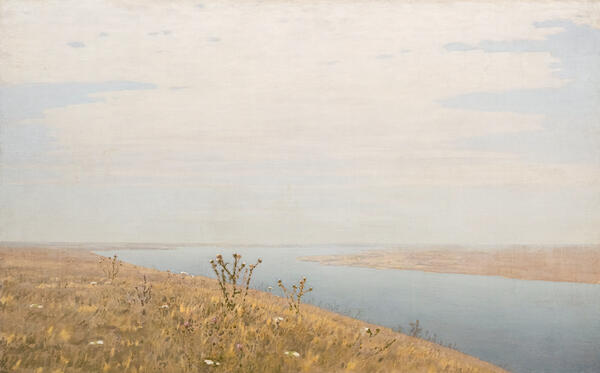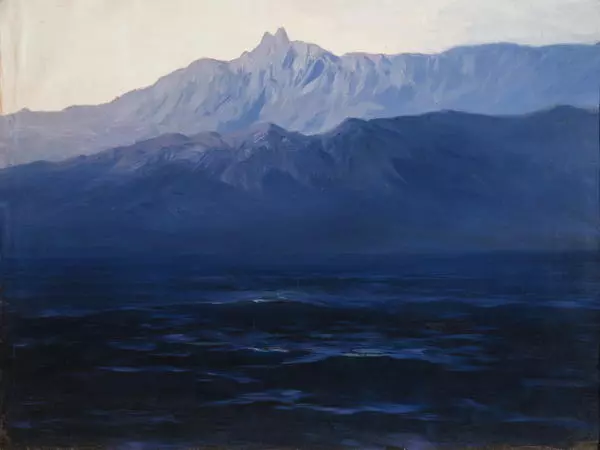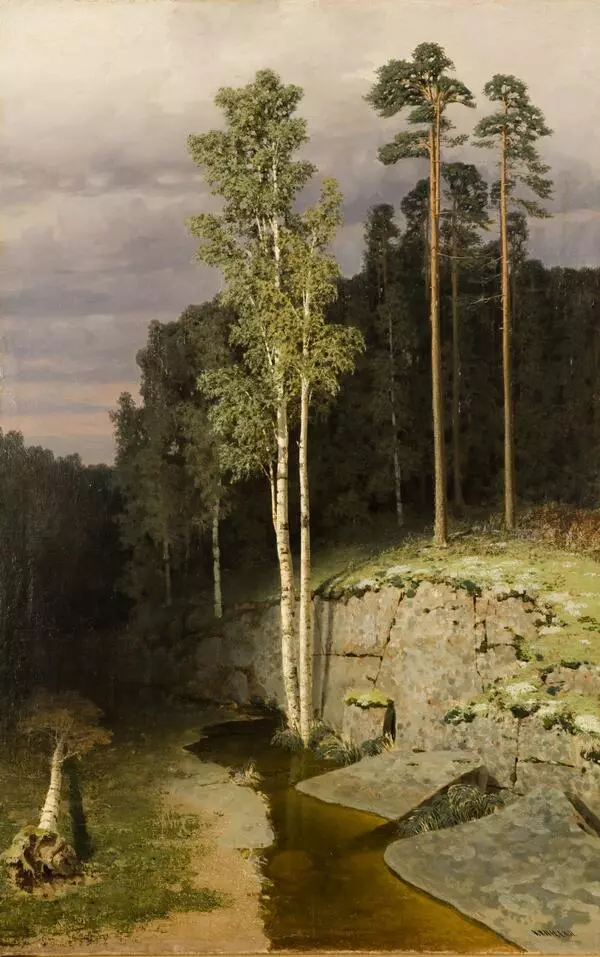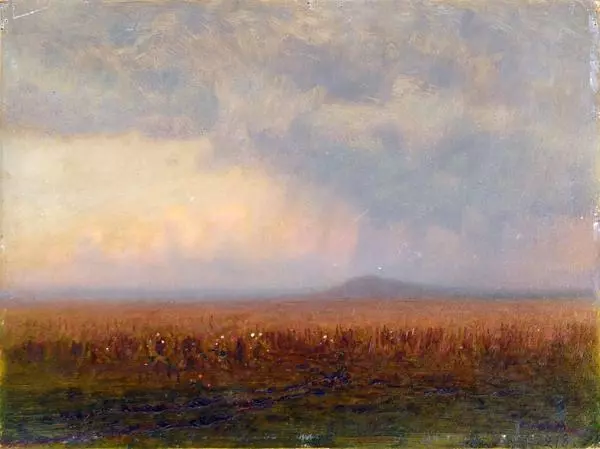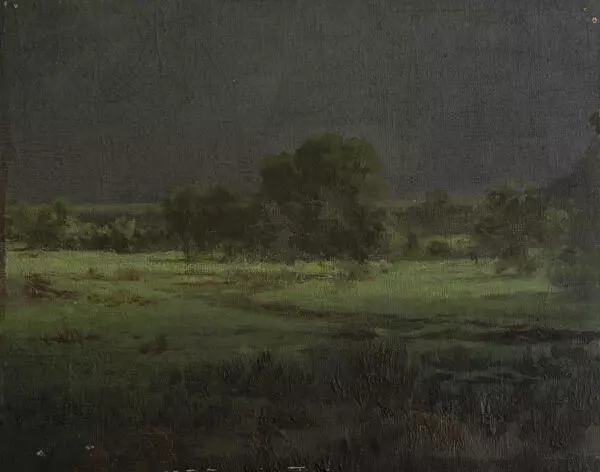Arkhip Kuindzhi is a famous master of Russian landscape. The future artist was born into a poor shoemaker’s family, lost his parents early and had to work from childhood. Kuindzhi began his career as a retoucher, and only at the age of 28, he finally managed to become a non-matriculated student at the Academy of Arts. At the same time, he became closely acquainted with a group of Russian Realist painters known as the Wanderers.
In 1894, Kuindzhi accepted an offer to become a professor at the Academy of Arts. The painter enjoyed teaching, and a lot of students admired him. Among his pupils were such famous artists as Nicholas Roerich, Konstantin Bogaevsky, Arkady Rylov, Wilhelm Purvit and others.
A few years later, Kuindzhi, who was already a celebrated painter, left The Society of Travelling Art Exhibitions (the Wanderers). The artist conclusively realized that he had no interest in featuring current social topics. In his paintings, he sought to convey the enjoyment of life, and not the struggle with the vices of society.
Kuindzhi abandoned the main principles of his contemporary landscape painters and chose a completely different path. While most artists worked en plein air, the painter preferred his studio. He believed that it was necessary to divert from the “whims of nature”, because it interferes with free creativity.
In his landscapes, the artist chose to create generalizations — he simplified the image and disposed of anything accidental and fleeting. The Romantic trend can be traced in Kuindzhi’s mature work, but unlike other Romantic artists, he preferred intimate landscape scenes, with some extraordinary light effect, to dramatic views.
Kuindzhi worked especially carefully on the light effect and conveyed it with such accuracy and detail that it led to an illusion of actual glow in all of his paintings. To achieve this aim, the artist was ready to give up the complexity, multi-layering and range of the available painting and composition techniques.
In ‘Sunset with Trees’, the artist pushed the intensity of color combinations to the limit. The clear silhouette contours of almost black trees in backlighting stand out against the background of the multicolored evening dawn. The color palette, the empty foreground and the strictly central arrangement of trees turn a small painting into an epic canvas.
In 1894, Kuindzhi accepted an offer to become a professor at the Academy of Arts. The painter enjoyed teaching, and a lot of students admired him. Among his pupils were such famous artists as Nicholas Roerich, Konstantin Bogaevsky, Arkady Rylov, Wilhelm Purvit and others.
A few years later, Kuindzhi, who was already a celebrated painter, left The Society of Travelling Art Exhibitions (the Wanderers). The artist conclusively realized that he had no interest in featuring current social topics. In his paintings, he sought to convey the enjoyment of life, and not the struggle with the vices of society.
Kuindzhi abandoned the main principles of his contemporary landscape painters and chose a completely different path. While most artists worked en plein air, the painter preferred his studio. He believed that it was necessary to divert from the “whims of nature”, because it interferes with free creativity.
In his landscapes, the artist chose to create generalizations — he simplified the image and disposed of anything accidental and fleeting. The Romantic trend can be traced in Kuindzhi’s mature work, but unlike other Romantic artists, he preferred intimate landscape scenes, with some extraordinary light effect, to dramatic views.
Kuindzhi worked especially carefully on the light effect and conveyed it with such accuracy and detail that it led to an illusion of actual glow in all of his paintings. To achieve this aim, the artist was ready to give up the complexity, multi-layering and range of the available painting and composition techniques.
In ‘Sunset with Trees’, the artist pushed the intensity of color combinations to the limit. The clear silhouette contours of almost black trees in backlighting stand out against the background of the multicolored evening dawn. The color palette, the empty foreground and the strictly central arrangement of trees turn a small painting into an epic canvas.
